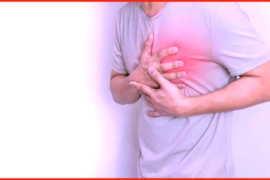Tachypneic breathing is a type of fast and shallow breathing that experts heart attack in pulmonology don’t claim is normal. Even during heavy exercises, it’s not common to be shallow and short of breath. Further, doctors have explained that such kind of breathing issues may happen due to various bodily imbalances.
In contrast to hyperpnea, where you may have deep rapid breathing due to aerobic exercises, when it’s tachypnea, you have shallow breathing that occurs due to medical conditions like asthma or cardiac arrest. Other than physiological causes, you can experience tachypneic shallow breathing due to emotional disturbances like anxiety or fear.
What is Tachypneic Breathing?
Tachypneic breathing is a kind of shallow or rapid breathing that can be an sign of severe medical conditions like asthma or heart attack. Pulmonology has differentiated it from transient tachypnea breathing which is when the breathing rate in fast for some time but then returns to the normal rate
Both infants and adults can suffer from the breathing condition. Particularly, infants born premature or individuals suffering from respiratory conditions like COPD confront the rapid breathing disease.
What are the Different Medical Conditions that Result in Tachypneic Breathing?
Over the years, pulmonology and other branches of medical science have highlighted medical conditions that can result in this shallow respiratory problem-
- Heart-Related Issues- Severe cardiac conditions such as anemia, heart failure, or interactive thyroid can cause cardiovascular changes further leading to tachypneic breathing.
- Lung Conditions- Most lung diseases like COPD, pneumonia, asthma, and lung cancer lower the oxygen and raise the Carbon dioxide level. Rapid breathing is common in this case, where the lungs try to restore the levels to normal.
- Metabolic Conditions- For patients with higher blood acid levels, it’s obvious that the increase in breathing rate will try to blow off the carbon dioxide. Some severe metabolic issues include lactic acidosis hepatic encephalopathy ketoacidosis etc
- Other Medications- Frequent intake of drugs like aspirin, stimulants, and marijuana automatically faster the pace of shallow breathing rate. Often chemotherapy to treat cancer indirectly worsens tachypnea because of the resulting anemic condition.
Treatment of Tachypneic Breathing as Per Pulmonology and Medical Science
Before treatment, it’s important to diagnose the rapid breathing condition at an early stage. So, diagnosing tachypnea depends on various factors including age, medical history, current medications, etc. Some of the diagnosis methods include chest X-rays, CT scans, electrocardiograms, VQ scans, toxicology screens, etc.
Medical sciences like pulmonology claim treatment of tachypneic breathing depends on the patient’s age and is based on the underlying cause.
For Infants
For younger children and infants, you can treat tachypneic breathing under the supervision of a pulmonologist and healthcare providers. The healthcare providers administer the oxygen level by using masks and tubes placed inside the nostrils of the child.
For Adults
For older children and adults, the treatment for shallow breathing problems depends on the underlying cause.
- Hyperventilation- Doctors recommend hyperventilation or slow breathing exercises where you have to inhale through the nostrils and exhale through an open mouth or nose. This organic exercise helps the lungs to relax and expand completely.
- Assistive Devices- when shallow breathing causes respiratory distress, it’s urgent to seek medical treatment. Otherwise, negligence may lead to conditions like cardiac arrests. For severe respiratory problems the assistance of a continuous positive airway pressure (CPAP) machine is taken to move air in and out of the lungs
- Medications- When tachypneic breathing is due to conditions like COPD or asthma inhaling medicines like epinephrine or bronchodilator doctors suggest the medicines These types of medicines relax the muscles around the bronchi and assist is dilating the airways
Tachypneic breathing is curable if diagnosed with the appropriate cause. If misleading treatment occurs, the breathing condition can return in the future.
FAQ
What are the signs of tachypneic breathing?
It is important to know when you are having shallow tachypneic breathing. Pulmonology and medical science have identified signs like difficulty in breathing, feeling short of breath, a sense of strangulation, or pale skin or lips as the indicators of tachypneic breathing.
Final Thoughts
To conclude, extremely fast breathing is not normal and may be a sign of tachypneic breathing, according to pulmonology and medical sciences. These shallow breathing conditions can be a symptom of a cardiac attack or other medical Insurance like asthma or lung cancer. The treatment for the breathing condition depends on the underlying cause and can be done with the help of breathing exercises and medications if detected at the right time.



